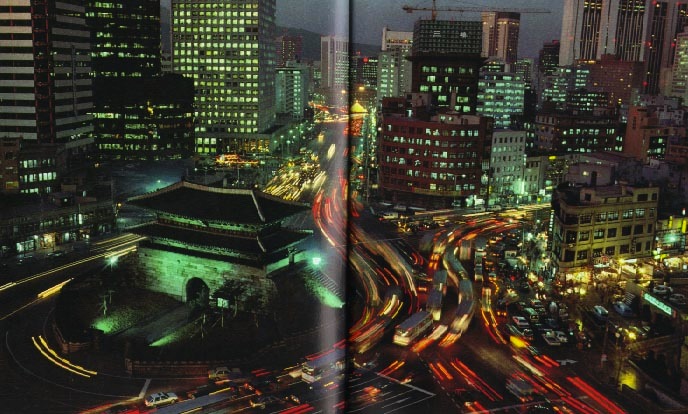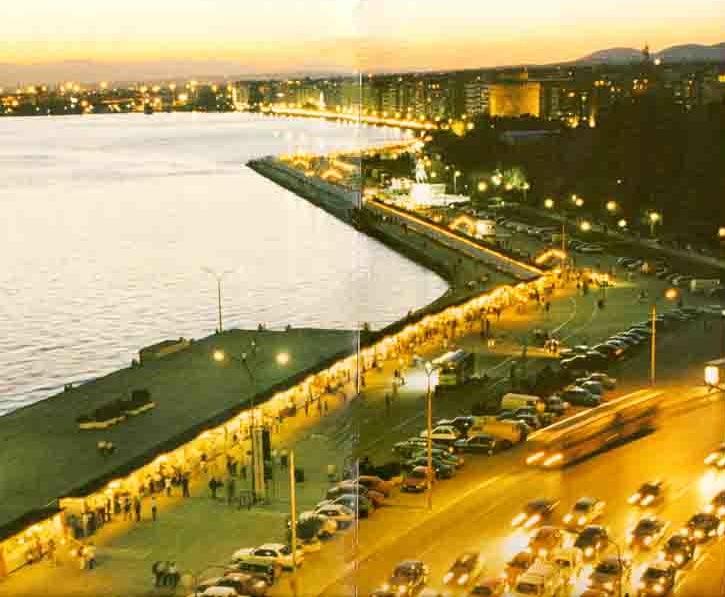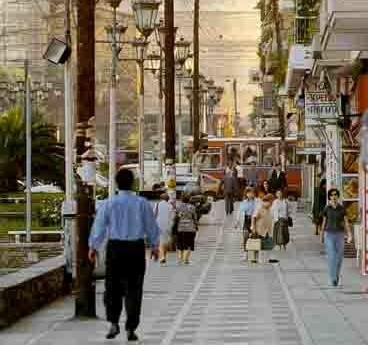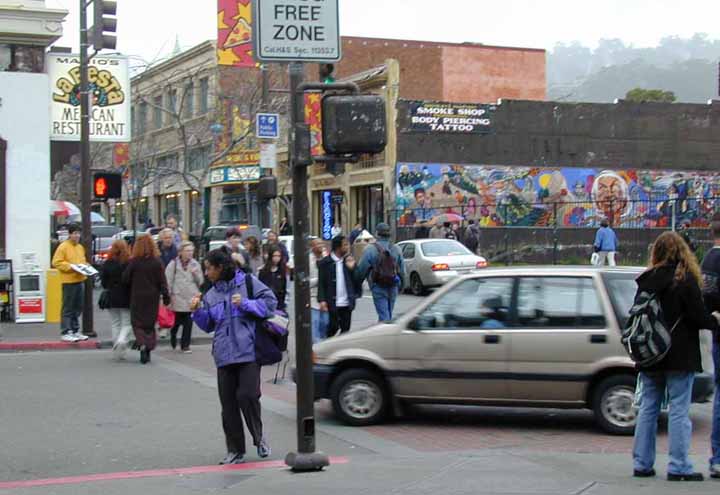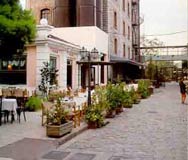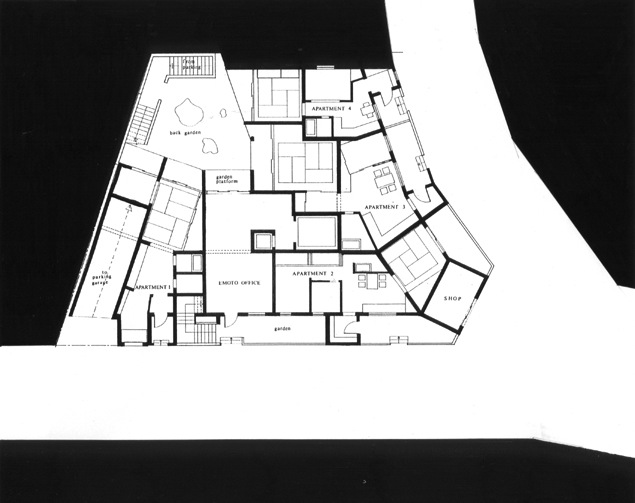STEP 2:CARS AND PEDESTRIANS TOGETHER
It used to be thought that one could make a city livable, by separating cars from pedestrians. And, indeed, many places—the center of Vienna, Stroget in Copenhagen, the centers of Florence and Chichester—benefit because they have been given back to pedestrians. The benefit of that kind of life is covered in the sequence on Pedestrian Streets. Instructions on how to make a pedestrian street so that it works well for pedestrians, are given there.
But the vibrancy of cities comes, in still LARGER part, too, from the interaction of cars and people. Who could imagine Manhattan with the life it has, if there were no cars there, or if the cars were removed? All its life would drain away. That is also true of London, Paris, Thessaloniki, New Delhi, Tokyo.
How then is the relation of cars and pedestrians to be managed so that the access by car is there, the safety and tranquility of pedestrian life is there, the dynamo of cars and pedestrians meeting is also there. All of it works. But the robbery of the public space, from us the people, is somehow prevented.
